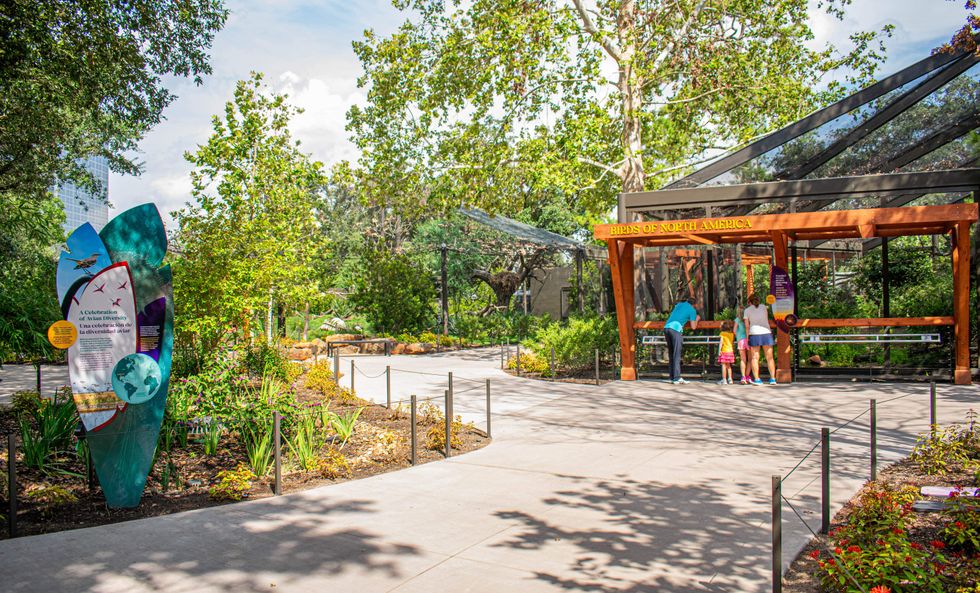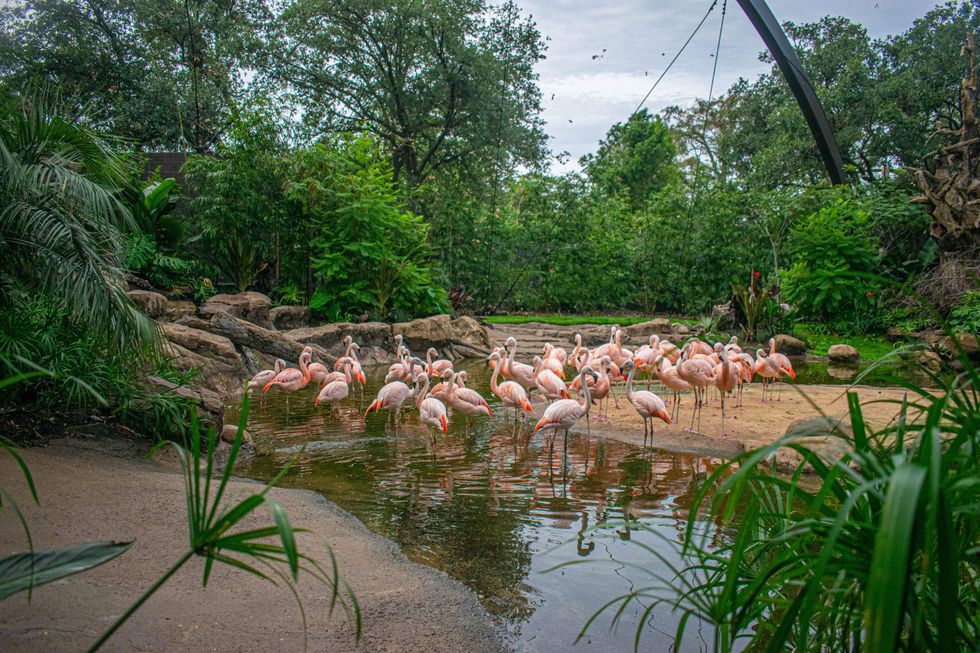see the world
Houston Zoo's new Birds of the World exhibit takes flight

Six years of improvements at the Houston Zoo finish with the opening of Birds of the World.
Visitors to the Houston Zoo will soon be able to visit the site’s brand-new Birds of the World exhibit, featuring avian species from three continents. It makes its official debut this Friday, August 30.
The opening caps off a six-year project by the zoo to enhance their exhibition and education spaces. The Keep Our World Wild campaign has been part of the zoo’s centennial celebrations, as the zoo turned 100 years old in 2022. Improvements included a new black bear exhibit, café, and the wildly successful Galapagos Islands exhibit.

The Avian Conservation Environment (ACE) will contain three biomes. The African Savannah highlights the birds of central Africa, including the grey crowned crane. Preserving these animals and increasing their numbers has been a top priority for the zoo, who partners with Dr. Olivier Nsengimana of the Rwanda Wildlife Conservation Association.
Visitors will also get to enjoy the woodlands of North America. The section focuses on birds people might see in our own backyards like the blue grosbeaks and indigo buntings. One goal of the area is to help combat the illicit bird trade through education and a partnership with the U.S. Fish & Wildlife Service.
Of course, the most anticipated new area is the South American Wetlands featuring an extensive new lagoon for the Chilean flamingoes. In June, 54 Houston Zoo staff and volunteers herded the pink birds through the compound to their new home. The parade was captured on TikTok, and was a truly ahhh-inspiring moment.

The South American biome is designed so that guests can walk safely among the birds, adding an immersive element to the visit.
The new aviaries are also designed with conservation in mind. The ACE building enhances both the zoo’s breeding programs as well as their efforts to have a smaller impact on the environment of the city.
Water usage in the aviaries has been reduced by 84 percent thanks to improved plumbing and irrigation as well as the addition of native plants. It is also 34 percent more energy efficient than a building of similar size, saving the zoo approximately 54,000 kwh a year. Care has been taken in the building materials as well by eliminating all toxic elements. Even the lightbulbs are environmentally friendly, being LED and containing no mercury.
All of this has landed the ACE a certification from the U.S. Green Building Council. It’s rare for a zoo building to achieve a gold status from the council, but the Houston Zoo made green construction an important part of bringing ACE to life.
After six years of improvements, the Houston Zoo is looking better than ever.
